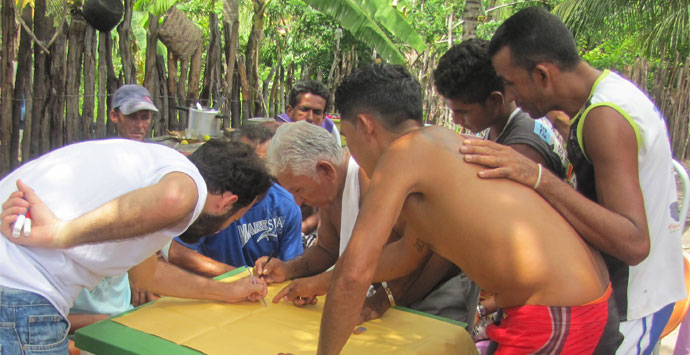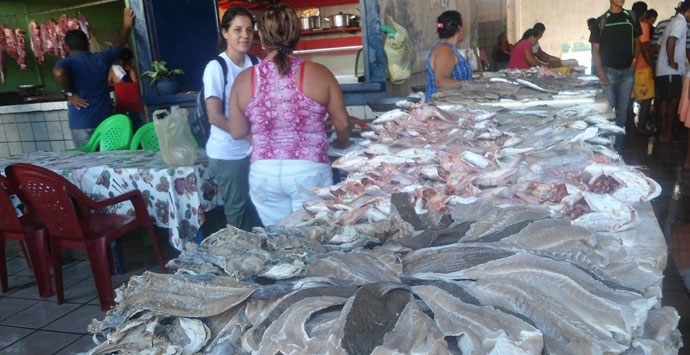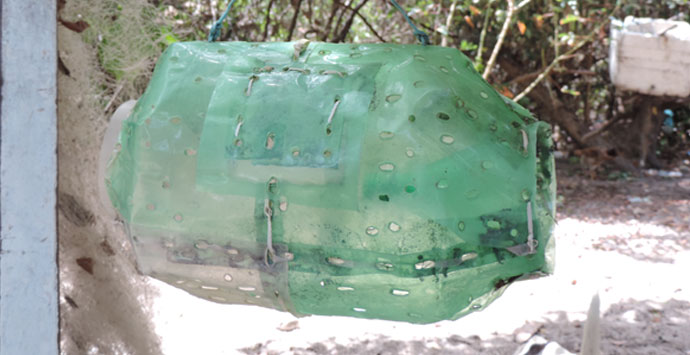#CoolJobs: The pristine Brazilian coast is my office
While I was studying for my bachelor’s degree in oceanography, I was also trying to choose the right career path for me. Like most students, I had many doubts, but I still remember thinking there was one thing I was certain about — that I wanted to travel and experience as much as I could along the 8,500-kilometer-long Brazilian coast.
Now, here I am, a project specialist on AECOM’s socioeconomic team in Brazil, where I have reached above and beyond my undergraduate expectations. My job involves traveling, visiting pristine landscapes and experiencing the incredible traditional cultures of Brazil. While working at AECOM, I have visited five states, approximately 50 municipalities and more than 150 coastal communities.
My role on the socioeconomic team involves contributing design and planning work, as well as conducting research about fishery activities. This research is extremely important for the licensing and permitting process of the offshore oil-and-gas industry in Brazil. Our methods are mostly qualitative, and are based on the use of questionnaires and participatory tools such as mapping, diagrams and history lines, to name a few.
 Davi Rodrigues and his team use participatory mapping to identify fishermen, fisheries and sacred territories.
Davi Rodrigues and his team use participatory mapping to identify fishermen, fisheries and sacred territories.
This has been one of my most-challenging fieldwork experiences to date. Oil-and-gas offshore activities are still very underdeveloped in northern Brazil compared to other regions of the country. Regardless, most of the people in that area are dependent on fishery activities as their main source of income and food. Considering the high sensitivity and vulnerability of nature in northern Brazil, the government demanded a very comprehensive and complex environmental impact assessment. Despite these challenges, it was still a really amazing trip.
Characterizing the activity of artisanal fisheries was difficult because, in northern Brazil, the economic sector is very traditional and informal, and is dispersed among several coastal communities. However, we still were able to successfully complete the project.
 A small-scale artisanal fishery boat. Artisanal fishery is responsible for 50 percent of the country’s fish production.
A small-scale artisanal fishery boat. Artisanal fishery is responsible for 50 percent of the country’s fish production.
During our team’s research, we surveyed more than 300 people, including fishermen, fish dealers, local leaders and government representatives. We found a great diversity of boats and gear used to fish for more than 100 different species. We learned that the artisanal fishermen often cannot rely on proper infrastructure to support their activities, and as a result, are exposed to many operational risks. We also realized that these individuals love what they do and would not do anything else.
 Salt fish (also known as bacalhau) at a local market.
Salt fish (also known as bacalhau) at a local market.
Meeting with the local communities and learning about their livelihoods was a life-changing experience for me. This was not just pragmatic data collection. They invited our team to have meals with them, which was an incredible demonstration of generosity and kindness. We were overwhelmed with great stories and examples of relevant traditional and ecological knowledge. One of my favorite stories was about the legend of Curupira, the guardian of the mangrove. The fishermen believe that when Curupira appears, they get lost inside the mangrove and the only way out is to release the crabs they captured. I learned about myths, religions, music, dancing, local technologies and community-based management of natural resources. We also learned about some of Brazil’s cross-cultural contradictions that lead to tough dilemmas, so I learned a lot more about my own country’s cultural diversity.
 A fish trap made with recycled polyethylene terephthalate bottles.
A fish trap made with recycled polyethylene terephthalate bottles.
What about nature? Well, northern Brazil is breathtaking. I had the opportunity to visit the great Delta do Parnaíba (Parnaíba River Delta). I walked through the whitest field of sand dunes I had ever seen in Lençóis Maranhenses National Park. I navigated through estuaries with the biggest tidal variations in Brazil (with amplitudes of about seven meters). I saw an abundance of natural resources, including oysters, mussels, crabs, shrimp, along with dozens of different fish and bird species. The mangrove trees were 30 meters high, and we could easily stand under their suspended roots.
Due to the large number of fishery assessments I have conducted during my first three years at AECOM, I have grown professionally in many ways. I am also continuously learning from my colleagues on the socioeconomic team. Moreover, working at AECOM gives me the opportunity to grow as an individual because I am able to explore my country and better understand and appreciate its nature, culture and people.

Davi Rodrigues is a project specialist on AECOM’s socioeconomic team in Brazil and has been with the company for three years. His work comprises designing, planning and conducting research to identify the impacts caused by the oil-and-gas industry in the fishery sector. Davi also loves the ocean and believes in the positivity of humanity.
LinkedIn: Davi Rodrigues







